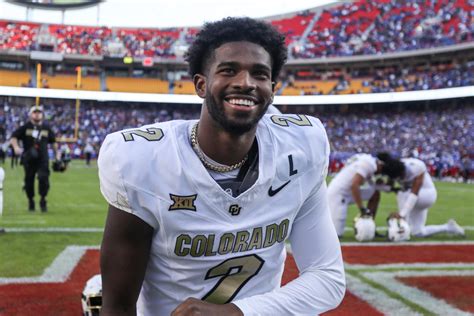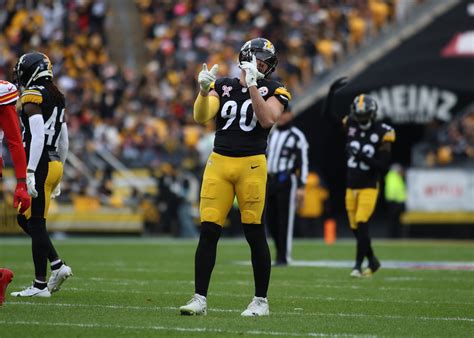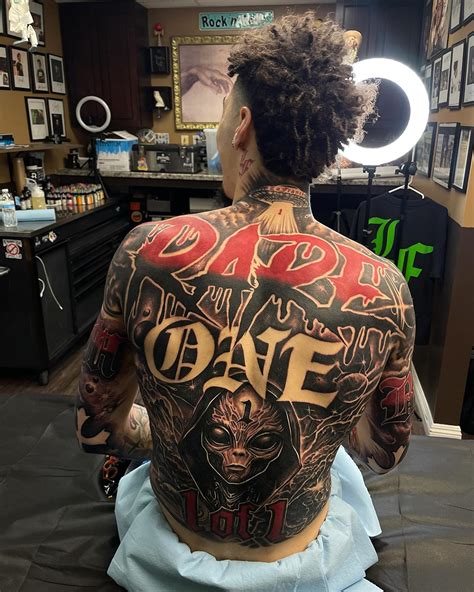
LaMelo Ball’s new chest and stomach tattoos are generating considerable controversy online, with many fans expressing strong disapproval and labeling the artwork “disgusting” on social media. The Charlotte Hornets point guard’s latest body art, featuring a collection of symbols and designs, has sparked a heated debate about personal expression and public perception.
Charlotte Hornets point guard LaMelo Ball is facing a barrage of criticism online following the unveiling of his latest tattoos, which cover a significant portion of his chest and stomach. Social media platforms have become battlegrounds for dissenting opinions, with many fans expressing their disapproval and using harsh language to describe the artwork. The controversy highlights the intersection of personal expression, celebrity culture, and the often-unforgiving court of public opinion.
Ball, known for his flashy playing style and distinctive personality, has never shied away from making bold statements, both on and off the basketball court. His decision to get such prominent and extensive tattoos is consistent with his image as a trendsetter and individualist. However, it has also made him a target for criticism from fans who find the tattoos aesthetically unappealing or inappropriate.
The specific designs of the tattoos have not been explicitly detailed in most reports, but the overall visual impact is described as a dense and complex collection of symbols and patterns. This complexity appears to be a major contributing factor to the negative reactions, with some fans suggesting that the tattoos are cluttered and lack artistic coherence.
“Bro what are those atrocious tattoos on LaMelo,” one Twitter user wrote, encapsulating the sentiment of many critics. Another user stated, “LaMelo got some of the worst tattoos I’ve ever seen,” underscoring the intensity of the disapproval. The comments reflect a broader trend of instant and often unfiltered reactions to celebrity choices in the age of social media.
The criticism directed at Ball’s tattoos extends beyond mere aesthetic preferences. Some fans have raised concerns about the potential impact of the tattoos on his professional image and marketability. In a world where athletes are increasingly scrutinized for their appearance and behavior, some believe that the tattoos could be seen as unprofessional or even detrimental to his brand.
However, it’s essential to acknowledge that not all reactions to Ball’s tattoos have been negative. Some fans have defended his right to express himself through body art, arguing that it is a personal choice and should not be subject to public judgment. These supporters emphasize the importance of individuality and self-expression, particularly in a culture that often pressures individuals to conform to societal norms.
The debate surrounding LaMelo Ball’s tattoos also raises broader questions about the role of celebrities as role models and the extent to which their personal choices should be subject to public scrutiny. While celebrities often benefit from their public image, they also face constant surveillance and judgment, particularly in the age of social media. This scrutiny can be especially intense when it comes to matters of personal appearance, as evidenced by the controversy surrounding Ball’s tattoos.
This is not the first time a celebrity athlete’s tattoos have sparked controversy. In the past, other high-profile athletes, such as LeBron James and Kevin Durant, have faced criticism for their tattoos. These controversies often highlight the complex and evolving attitudes towards body art in contemporary society. While tattoos have become increasingly mainstream, they still carry certain connotations and can be subject to prejudice, particularly in certain professional contexts.
The situation also underscores the power of social media in shaping public opinion and influencing celebrity culture. Platforms like Twitter and Instagram provide a direct channel for fans to express their views and engage with celebrities, often in real-time. This direct engagement can be both positive and negative, allowing for greater connection and dialogue but also creating opportunities for criticism and harassment.
As LaMelo Ball continues his career with the Charlotte Hornets, it remains to be seen how the controversy surrounding his tattoos will affect his public image and brand. While some fans may be turned off by the artwork, others may find it appealing or even admire Ball’s willingness to express himself authentically. Ultimately, the impact of the tattoos will depend on a variety of factors, including Ball’s performance on the court, his overall behavior, and the evolving attitudes towards body art in society.
The situation serves as a reminder that celebrities are constantly under the microscope and that their personal choices can have significant consequences for their public image and career. It also highlights the importance of individuality and self-expression, even in the face of criticism and judgment. While LaMelo Ball’s tattoos may not be to everyone’s taste, they are ultimately a reflection of his personal identity and should be respected as such.
The article continues with a deeper dive into the specific reactions, the history of tattoos in sports, and the broader cultural context surrounding body art. It also explores potential implications for LaMelo Ball’s career and endorsements, as well as his response to the criticism.
Detailed Analysis and Context
The immediate and visceral reactions to LaMelo Ball’s tattoos highlight a significant cultural divide regarding body modification. While tattoos have become increasingly commonplace in mainstream society, their acceptance is far from universal. The older generations, in particular, often hold more conservative views, associating tattoos with rebellion, nonconformity, or even criminality. This generational gap is evident in the comments sections and social media threads discussing Ball’s ink. Many older fans express shock and disapproval, while younger fans are more likely to defend his right to express himself.
Furthermore, the professional context of Ball’s career adds another layer of complexity. As a highly visible athlete, he is essentially a walking billboard for his team, his sponsors, and the NBA as a whole. His appearance is therefore subject to greater scrutiny than that of the average individual. Some argue that his tattoos could be perceived as unprofessional or even offensive, potentially damaging his brand and limiting his endorsement opportunities. This argument reflects a persistent tension between individual expression and corporate interests in the world of professional sports.
However, it is also important to consider the changing landscape of sports marketing. Athletes are increasingly valued for their authenticity and individuality, and many brands are actively seeking to partner with individuals who are willing to push boundaries and challenge conventional norms. In this context, Ball’s tattoos could be seen as a positive asset, enhancing his appeal to younger, more progressive audiences. His willingness to be himself, even in the face of criticism, could resonate with fans who value authenticity and self-expression.
The criticism directed at Ball’s tattoos also reveals a certain degree of aesthetic prejudice. Many of the negative comments focus on the perceived ugliness or incoherence of the artwork. This reflects a subjective judgment of taste, but it also reveals underlying assumptions about what constitutes “good” or “acceptable” art. Tattoos, like any other form of artistic expression, are subject to individual interpretation and appreciation. What one person finds aesthetically pleasing, another may find repulsive.
Moreover, the specific designs of Ball’s tattoos are likely to play a significant role in shaping public opinion. If the tattoos feature culturally sensitive or controversial symbols, they are more likely to generate negative reactions. Conversely, if the tattoos are perceived as meaningful or artistically innovative, they may be more likely to be accepted or even admired. Without specific details about the designs, it is difficult to assess the full extent of their potential impact.
The controversy surrounding Ball’s tattoos also raises questions about the role of social media in shaping public discourse. Platforms like Twitter and Instagram have become echo chambers for dissenting opinions, amplifying negative sentiments and creating a sense of outrage. The anonymity afforded by these platforms often emboldens users to express harsh or even abusive comments, contributing to a toxic online environment. In this context, it is important to recognize that the volume of criticism does not necessarily reflect the true diversity of opinion.
It is also worth noting that the criticism directed at Ball’s tattoos is often intertwined with broader societal anxieties about race, class, and cultural identity. Tattoos have historically been associated with marginalized groups, and the negative reactions to Ball’s ink may reflect underlying prejudices or stereotypes. This is not to suggest that all criticism is motivated by prejudice, but it is important to be aware of the potential for bias in shaping public opinion.
In the past, athletes who have challenged conventional norms of appearance have often faced significant backlash. Dennis Rodman, for example, was widely criticized for his piercings, tattoos, and unconventional hairstyles. However, he also became a cultural icon, embraced by fans who admired his rebellious spirit. Whether LaMelo Ball will follow a similar trajectory remains to be seen.
Ultimately, the controversy surrounding LaMelo Ball’s tattoos is a complex and multifaceted issue with no easy answers. It reflects a collision of personal expression, public perception, and broader societal attitudes towards body art. While some fans may disapprove of his tattoos, others may find them appealing or even inspiring. The impact of the tattoos on his career and public image will depend on a variety of factors, including his performance on the court, his overall behavior, and the evolving cultural landscape.
Potential Impact on LaMelo Ball’s Career and Endorsements
The immediate impact of the tattoo controversy on LaMelo Ball’s career is likely to be minimal. His playing ability and on-court performance will continue to be the primary determinants of his success. However, the long-term impact on his brand and endorsement opportunities is more uncertain.
Brands typically seek to align themselves with athletes who project a positive and relatable image. While some brands may be hesitant to partner with an athlete who has generated controversy, others may see it as an opportunity to appeal to a younger, more rebellious demographic. The key will be how Ball handles the criticism and whether he can maintain a positive public image despite the controversy.
If Ball embraces his tattoos and continues to express himself authentically, he may be able to turn the controversy into a positive asset. He could partner with brands that celebrate individuality and self-expression, positioning himself as a role model for young people who are looking to challenge conventional norms.
However, if the controversy persists and Ball’s public image suffers, he may face difficulties in securing lucrative endorsement deals. Brands may be wary of associating themselves with an athlete who is perceived as controversial or unprofessional.
Ultimately, the impact on Ball’s career will depend on his ability to navigate the complex and often unforgiving world of celebrity culture. He will need to balance his desire for self-expression with the demands of his profession and the expectations of his fans.
LaMelo Ball’s Response to the Criticism
As of the latest reports, LaMelo Ball has not publicly addressed the criticism of his tattoos. His silence could be interpreted in several ways. He may be choosing to ignore the negativity, focusing instead on his performance on the court. He may be waiting for the controversy to subside before making a statement. Or he may be working with his management team to develop a strategic response.
Regardless of his reasons, Ball’s silence has allowed the controversy to continue to simmer. Some fans have interpreted his silence as arrogance or indifference, while others have praised him for not giving the critics the satisfaction of a response.
If and when Ball does address the criticism, his response will be closely scrutinized. He will need to strike a balance between defending his right to self-expression and acknowledging the concerns of his fans. He may choose to explain the meaning behind his tattoos, or he may simply reiterate his belief in the importance of individuality.
His response will likely shape the narrative surrounding his tattoos and influence public opinion moving forward. A thoughtful and well-articulated response could help to defuse the controversy and even turn it into a positive. A dismissive or defensive response, on the other hand, could further inflame the situation.
The History of Tattoos in Sports
The presence of tattoos in professional sports has evolved dramatically over the decades. Initially, tattoos were often associated with a rebellious or counter-cultural image and were relatively uncommon among athletes. However, as tattoos became more mainstream, their prevalence in sports increased significantly.
Today, many athletes, across various sports, sport extensive and elaborate tattoos. These tattoos often serve as expressions of personal beliefs, cultural heritage, or significant life events. They can be symbols of family, faith, or personal struggles.
Notable athletes such as LeBron James, Kevin Durant, and Neymar Jr. have all embraced tattoos, contributing to their growing acceptance within the sports world. However, even with increased acceptance, controversies surrounding athletes’ tattoos still arise, highlighting the delicate balance between personal expression and public perception.
The evolving attitude toward tattoos in sports reflects broader societal shifts. As tattoos become more commonplace and accepted in mainstream culture, they are also becoming more prevalent and accepted in the world of professional sports. However, the scrutiny and criticism that LaMelo Ball is currently facing demonstrates that there is still work to be done in overcoming prejudices and stereotypes.
The trend in sports also mirror the entertainment industries. Many musicians and actors are known to have tattoos, and they don’t have problems being hired because of the tattoos. Therefore, the trend is also pointing to the same direction for athletes.
FAQ Section
1. What is the controversy surrounding LaMelo Ball’s new tattoos?
The controversy stems from the negative reactions of many fans on social media who have described LaMelo Ball’s new chest and stomach tattoos as “disgusting” and “atrocious.” These reactions are based on the aesthetic preferences of individual fans and also reflect broader cultural attitudes towards body art, particularly in professional settings.
2. What are some of the reasons fans are criticizing LaMelo Ball’s tattoos?
Some of the reasons include:
- Aesthetic Preferences: Many fans simply find the tattoos visually unappealing or believe they lack artistic merit.
- Professional Image: Some believe that the tattoos could negatively impact Ball’s professional image and marketability, making him less appealing to sponsors and fans.
- Cluttered Design: Some critics have described the tattoos as being too dense and lacking a cohesive design.
- Generational Differences: Older fans may hold more conservative views about tattoos, associating them with rebellion or unprofessionalism.
3. Has LaMelo Ball responded to the criticism of his tattoos?
As of the latest reports, LaMelo Ball has not publicly addressed the criticism.
4. Could this tattoo controversy affect LaMelo Ball’s career or endorsements?
Potentially, yes. While his on-court performance remains the primary factor in his success, the controversy could affect his brand and endorsement opportunities. Some brands may be hesitant to partner with an athlete who has generated controversy, while others may see it as an opportunity to appeal to a younger, more rebellious demographic.
5. Are there examples of other athletes facing similar criticism for their tattoos?
Yes, other high-profile athletes, such as LeBron James and Kevin Durant, have faced criticism for their tattoos in the past. These controversies highlight the complex and evolving attitudes towards body art in contemporary society and the delicate balance between personal expression and public perception. Dennis Rodman also faced similar issues with piercings and colorful hairstyles, apart from his tattoos.









